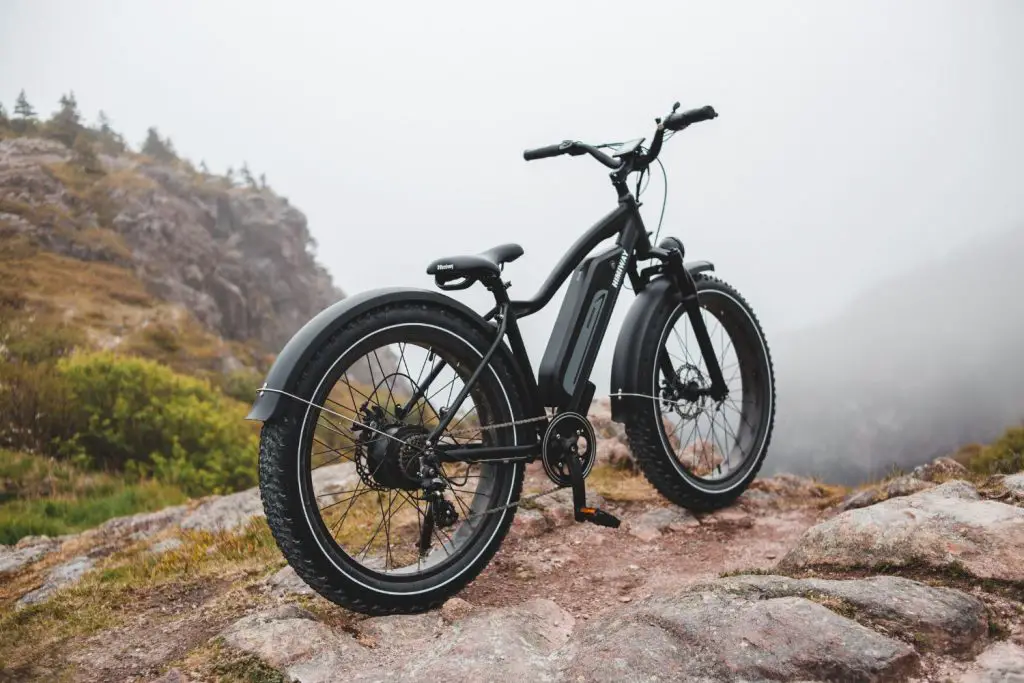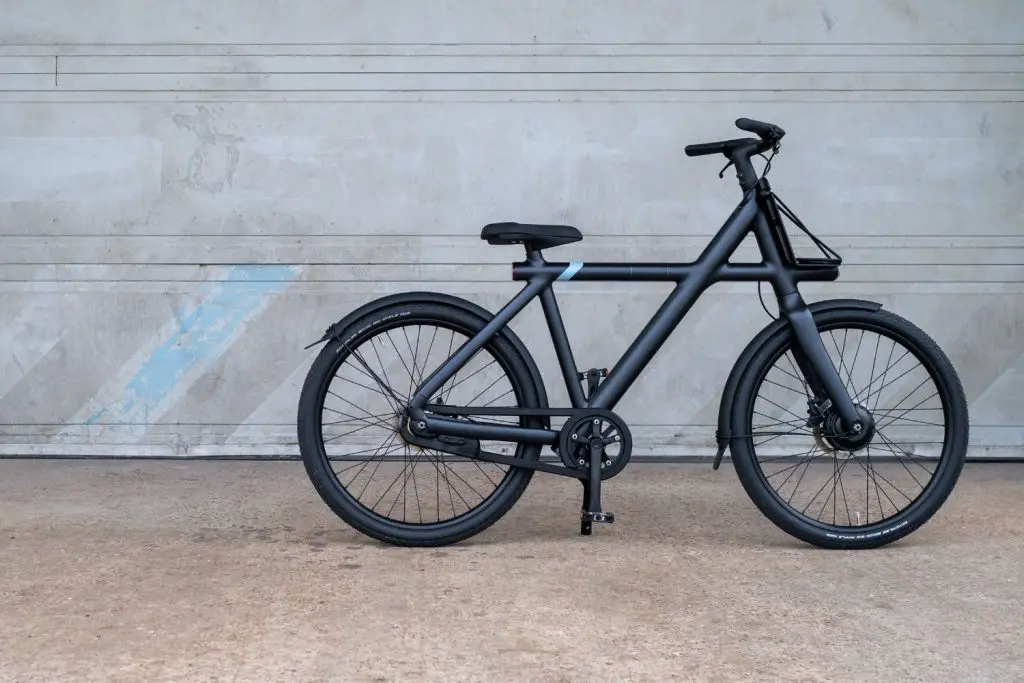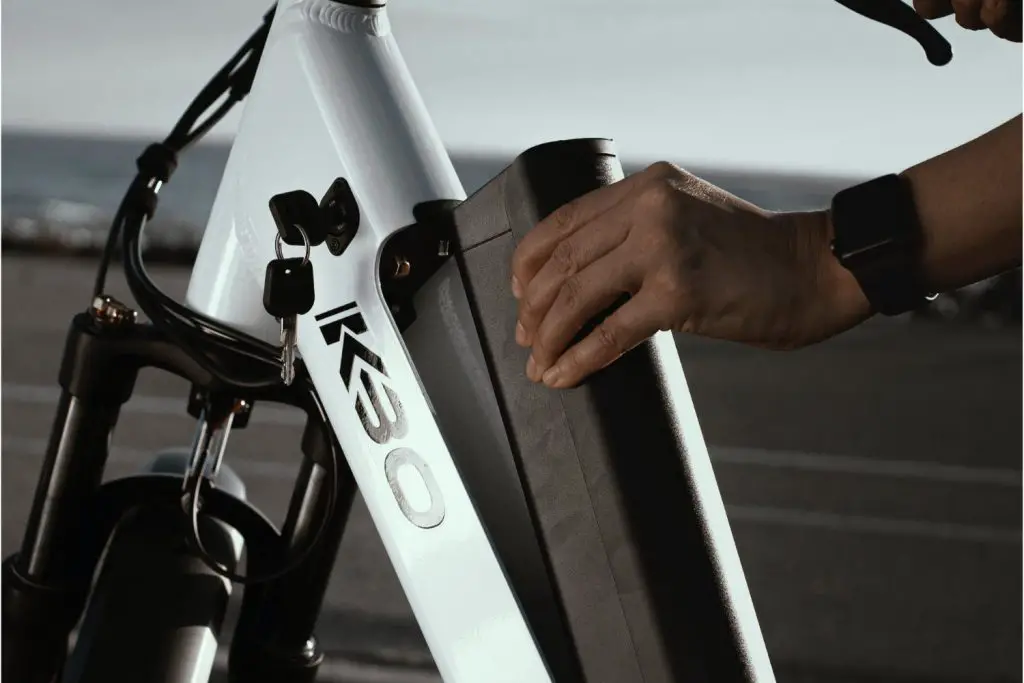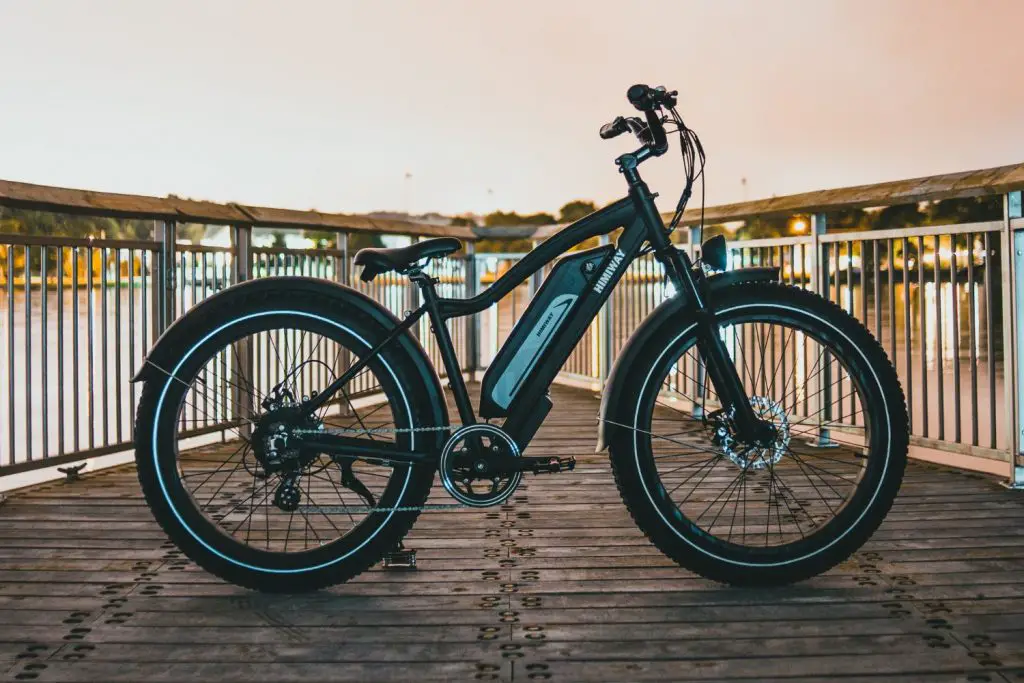We may get commissions for purchases made through links in this post. Thanks for the support! 👍
E-bikes (aka electric bikes) are a great way to get around quickly and efficiently. Many people get them for their convenience and speed. But if you’re considering buying an e-bike, one vital factor is the weight.
E-bikes generally weigh around 40-80 pounds (18-36 kilograms), but this depends on factors such as the materials used in the e-bike’s construction. Many bikers prefer e-bikes as light as 22 pounds (9 kilograms).
In this article, I’ll explore how much different styles of e-bikes weigh and what factors affect their weight. Please keep reading to learn about different types of e-bikes, their corresponding weights, and the pros and cons to consider.

Why Are E-Bikes So Heavy?
E-bikes are heavier than regular bikes because they have many features and accessories on board, such as their heavy-duty frames and batteries. These handle the bike’s motor’s weight and are usually made of steel, so they’re solid and durable. They also enable you to ride smoothly at high speeds.
E-bikes are approximately 13.22 pounds (6-10 kilograms) heavier than conventional bikes. Besides their strong frames, there are other things that e-bikes have on board that add to their weight. These include:
- Battery. Lithium-ion batteries are standard, and their weight depends on the battery’s construction and capacity. They can weigh up to 5.5 pounds (2.5 kilograms).
- Motor. The e-bike motor can weigh up to around 17 pounds (7.7 kilograms).
- Special tires. Some e-bikes are equipped with special tires, such as fat tires, for off-road bikes. But, even if these are not used in the bike’s construction, e-bike tires contain a unique compound that decreases their rolling resistance, boosting efficiency. Therefore, they can weigh more than conventional bike tires.
- Controller system. This system uses signals from sensors so that the bike can pull enough power from the motor.
- Wiring circuit. This circuit enables all the bike’s electrical components to connect and gets threaded through the cycle, contributing to how much it weighs.
- Mountain bike accessories. If you own an electric mountain bike, it will consider more because it features the necessary components to support greater weight and stability. These include the bike’s suspension as well as its tougher wheels.
- Storage features. Some e-bikes contain accessories such as storage racks. These also contribute to the bike’s overall weight.
Why Heavy E-Bikes Can Be a Good Thing
Many bikers assume that heavy e-bikes are not fun to ride, but the truth is that a little extra weight can be a positive thing. Heaviness helps to stabilize the bike so that it’s easier to maneuver. Generally, light bikes are challenging to control.
Extra weight is significant when you want to ride your e-bike faster and when you need to make quick turns. If you don’t have the stability of your e-bike’s weight, you’ll quickly lose balance on your bike, which puts you at risk of injury.
Potential Drawbacks of Heavy E-Bikes
Although heavy e-bikes provide excellent stability and control, they’re not perfect for everyone. Bikers can experience the following drawbacks:
- Physical strain. If a bike is too heavy for you, it won’t be easy to lift and carry it, such as when you need to carry it up and down or pack it in your car. This is why choosing an e-bike with the strength to carry is essential.
- Difficult handling. Heavy e-bikes are not easy to control. When riding one, you might find it challenging to come to a stop quickly. While you might feel the strain of handling a heavy e-bike, it can also make the bike sluggish during use.
- Storage issues. The heavier and bulkier your bike, the more space it will need. Therefore, this is something to consider when storing your bike. A folding e-bike might be more convenient because it can be packed away.

Weight Comparison of Different E-Bikes
Different types of e-bikes have different weights. The following table shows different e-bike types and how much they weigh from lightest to heaviest:
| Type of Bike | Approx. Weight |
|---|---|
| Mini folding e-bike | 30-40 pounds (13-18 kilograms) |
| Racing e-bikes | 40 pounds (18 kilograms) |
| Folding electric mountain bike | 40-70 pounds (18-32 kilograms) |
| Folding fat tire e-bikes | 50 pounds (23 kilograms) |
| Commuting e-bikes | 50-70 pounds (23-32 kilograms) |
| Fat tire e-bikes | 60-80 pounds (27-36 kilograms) |
| Mountain e-bikes | 70 pounds (32 kilograms) |
Folding E-Bikes
Folding bikes like these ones are great for increased convenience and portability. You can easily store them in the garage, even if you have a small living space. Here’s how different types of folding bikes weigh:
- Mini folding e-bike: 30-40 pounds (13.6-18 kilograms)
- Folding electric mountain bike: 40-70 pounds (18-32 kilograms)
- Folding fat-tire e-bikes: 50 pounds (23 kilograms)
Racing E-Bikes
These are light bikes so that they can increase your speed. They usually weigh approximately 40 pounds (18 kilograms). Their lightness is typically a result of their thin frames and wheels.
Commuting E-Bikes
These bikes are ideal for your daily commute, hence their name. They’re designed with road bike wheels but handlebars that you’ll find on mountain bikes. These bikes usually weigh around 50-70 pounds (23-32 kilograms) due to their large batteries that increase their capacity.
Fat Tire E-Bikes
These bikes are designed similarly to mountain e-bikes, but their fat tires make them ideal for navigating rugged terrain. These wide tires contribute to the bike’s weight of approximately 60-80 pounds (27.2-36 kilograms).
Mountain E-Bikes
These e-bikes can weigh between 40 and 70 pounds (18-32 kilograms), but they are usually around 70 pounds (32 kilograms). The extra weight is due to additional features, such as robust suspension, that make them effective when ridden off the road.
Conclusion
E-bikes can be heavy, but you can find some lighter e-bike models on the market. However, the weight of a bike depends on its type. For example, mountain and fat-tire bikes will be heavier than racing bikes, designed to be aerodynamic and light so that people can reach high speeds.

![Top 7 Best Bikes At REI [For Every Budget]](https://amanandhisgear.com/wp-content/uploads/2020/05/Best-Bikes-at-REI.jpg)

